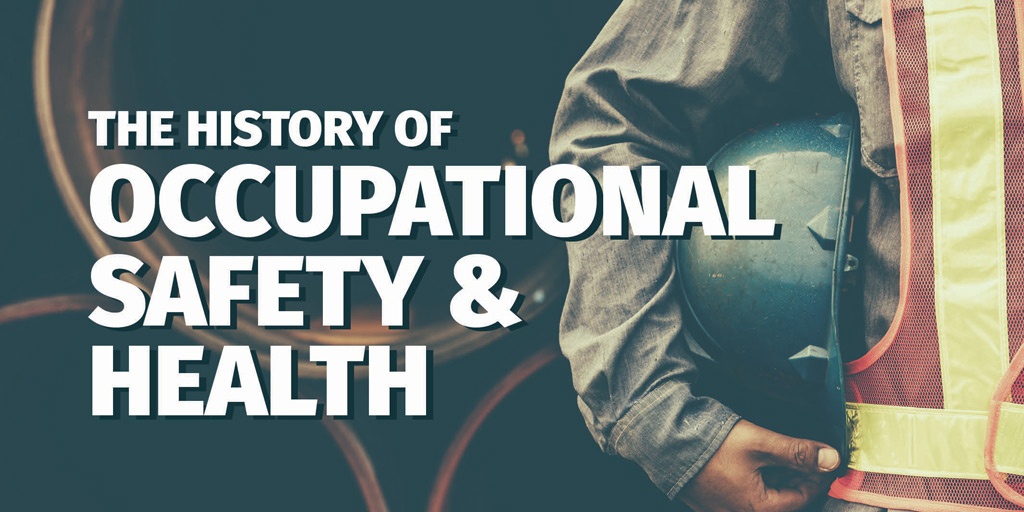The goals of Occupational Safety and Health (OSH) programs include fostering a safe and healthy work environment. OSH may also protect co-workers, family members, employers, customers, and many others who might be affected by the workplace environment. In the United States, the term Occupational Health and Safety is referred to as Occupational Health and Safety and Non-Occupational Safety and includes safety for activities outside of work. In common-law jurisdictions, employees have a common law duty to take reasonable care of the safety of their employees. All organizations have the duty to ensure that employees and any other person who may be affected by the organization’s activities remain safe at all times.
As defined by the World Health Organization, “occupational health deals with all aspects of health and safety in the workplace and has a strong focus on primary prevention of hazards.” Health has been defined as “a state of complete physical, mental, and social well-being and not merely the absence of disease or infirmity.” Occupational Health is a field of healthcare concerned with enabling an individual to undertake their occupation, in the way that causes
As labor movements arose in response to workers concerns in the wake of
Otto von Bismarck inaugurated the first social insurance legislation in 1883 and the first worker’s compensation law in 1884-the first of their kind in the Western world. Similar acts followed in other countries, partly in response to labor unrest.
Workplace Hazards
Although work provides many economic and other benefits, a wide array of workplace hazards also
Physical hazards affect many people in the workplace. Occupational hearing loss is the most common work-related injury in the United States, with 22 million workers exposed to hazardous noise levels at work and an estimated $242 million spent annually on worker’s compensation for hearing loss disability.
Falls are also a common cause of occupational injuries and fatalities, especially in construction, extraction, transportation, healthcare, and building cleaning and maintenance. Machines have moving parts, sharp edges, hot surfaces and other hazards with the potential to crush, burn, cut, shear, stab or otherwise strike or wound workers if used unsafely.
Biological hazards (biohazards) include infectious microorganisms such as viruses and toxins produced by those organisms such as anthrax. Biohazards affect workers in many industries; influenza, for example, affects a broad population of workers. Outdoor workers, including farmers, landscapers, and construction workers, risk exposure to numerous biohazards, including animal bites and stings, poisonous plants, and disease transmitted through animals such as West Nile virus and Lyme disease. Health Care workers, including veterinary health workers, risk exposure to blood-borne pathogens and various infectious diseases.
Dangerous chemicals can pose a chemical hazard in the workplace. The are many classifications of hazardous chemicals, including neurotoxins, immune agents, dermatologic agents, carcinogens, reproductive toxins, systemic toxins,
Psychosocial hazards include risks to the mental and emotional well-being of workers, such as feelings of job insecurity, long work hours, and poor work-life balance.
By Industry
Specific occupational safety and health risk factors vary depending on the specific sector and industry. Construction workers might be particularly at risk of falls, for instance, whereas fisherman might be particularly at risk to drowning. The United States Bureau of Labor Statistics identifies the fishing, aviation, lumber, construction, metalworking, agriculture, mining, and transportation industries as among some of the more dangerous for workers.
Similarly, psychosocial risk such as workplace violence
Construction
Construction is one of the most dangerous occupations in the world, incurring more occupational fatalities than any other sector. In 2009, the fatal occupational injury rate among construction workers in the U.S. was nearly three times that for all other workers. Falls are the most common cause of fatal and non-fatal injuries among construction workers. Proper safety equipment, such
Agriculture
Agriculture workers are often at risk of work-related injuries, lung disease, noise-related hearing loss, skin disease, as well as certain cancers related to
Mining and Oil & Gas Extraction
According to data from the 2010 NHIS-OHS, workers employed in mining and oil extraction industries had a high rate of exposure to potentially harmful work organization characteristics and hazardous chemicals. Many of these workers worked long hours. 50% worked over 48 hours a week and 25% more than 60 hours a week. About
Healthcare
Healthcare workers are exposed to many hazards that can adversely affect their health and well-being. Long hours, changing shifts, physically demanding tasks, violence, and exposures to infectious diseases and harmful chemicals are examples of hazards that put these workers at risk for illness or injuries. According to the Bureau of Labor, U.S. hospitals recorded 253,700 work-related injuries and illnesses in 2011, which is 6.8 work-related injuries and illnesses for every 100 full-time employees. The injury and illness rate of hospitals is higher than the rates in construction and
Workplace Fatality and Injury Statistics
Statistics compiled by the Bureau of Labor Statistics compiles information about workplace fatalities and non-fatal injuries in the U.S. In 1970, an estimated 14,000 workers were killed on the
Management Systems
United States
In the United States, President Richard Nixon signed the Occupational Safety and Health Act into law on December 29, 1970. The act created the three agencies that administer it. They include the Occupational Safety and Health Administration, National Institute for Occupational Safety and Health, and the Occupational Safety and Health Review Commission. The act authorizes the Occupational Safety and Health Administration (OSHA) to regulate private employers in the 50 States, District of Columbia, and territories.
The Act establishing it includes a general duty clause; requiring an Employer to comply with the Act and Regulations derived from it, and to provide Employees with “employment and a place of employment which are free from recognized hazards that are causing or are likely to cause
OSHA was established in 1971 under the Department of Labor. It
It’s stated mission is: to assure safe and healthful working conditions for working men and women by setting and enforcing standards and providing training, outreach, education, and assistance.
LONG Building Technologies
Some of the tasks undertaken by LONG’s Safety Committee include:
- Develop processes, procedures, criteria, requirements, and methods to attain the best possible management of the hazards and exposures that cause injury to people, and damage property, or the environment.
- Apply good business practices and economic principles for the efficient use of resources to add to the importance of the safety processes.
- Promote other members of the company to contribute by exchanging ideas and other different approaches to make sure that everyone in the corporation
possess Occupational Health and Safety knowledge andhave functional roles in the development and execution of safety procedures. - Assess services, outcomes, methods, equipment, workstations, and procedures by using qualitative and quantitative methods to recognize the hazards and measures the related risks.
- Examine all possibilities, effectiveness, reliability, and expenditure to attain the best results for the company concerned.
For this information and more, visit: Occupational Safety and Health
Subscribe to Updates

Joslyn is the digital marketing coordinator for LONG. She loves to hike and play volleyball when the weather is warm and spends her free time reading, watching movies, and playing video and board games.
